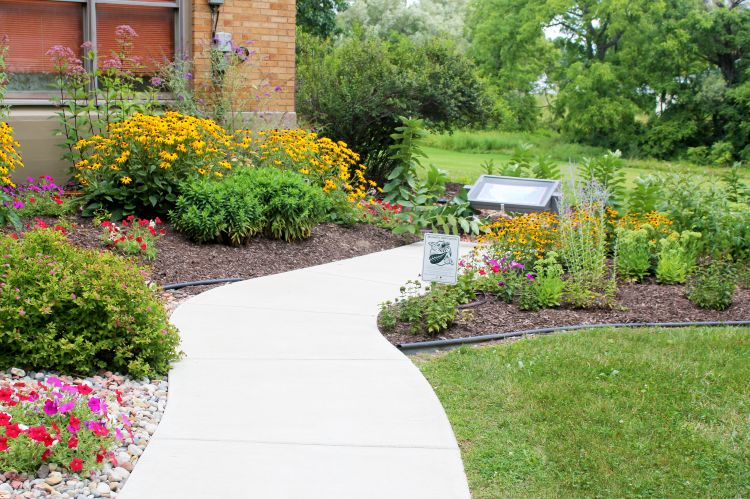Lead concerns for gardeners: Reducing health risk
Gardeners concerned about lead in their soil can reduce the risk of harm to their health.

Lead is part of the Earth’s crust and occurs naturally in small amounts in the soil. Soil can also be contaminated with lead from nearby industrial sites, disposal of lead-containing products, or past use of leaded gasoline and leaded household paints. Even the pesticides used in old fruit orchards contained lead. The amount of lead is generally highest in the top 3 inches of the undisturbed soil surface. Lead contamination is persistent, meaning it will stay in the soil for a long time.
Lead can get into your body when you breathe in or accidentally swallow contaminated soil and dust while gardening. Young children can swallow lead when they put dirty hands and toys in their mouths during play. Children are at greater risk of harm because they absorb lead more easily and because their brains and nervous systems are more sensitive to the damaging effects of lead.
Whether growing a food garden, an ornamental garden, planting trees, playing or working, care should be taken to reduce your risk of exposure to lead in soil.
Testing for lead in soil
If you are not sure what was on or near your garden site in the past, Michigan State University Extension recommends getting your soil tested for lead. The higher the amount of lead in the soil, the greater chance you or your family could be harmed by lead. The Michigan Department of Health and Human Services offers a fact sheet to help understand the results of a soil lead test.
Gardening best practices
If you are a gardener and are concerned about lead in soil, you can reduce the risk of harm to yourself and others.
- Locate gardens away from heavily traveled streets and buildings built before 1978 that may have been painted with lead-based paint.
- Keep the soil pH between 6.5 and 7.5 if possible, which can reduce how much lead plants will take up while growing.
- Add organic matter such as compost, leaves, manure or grass clippings to your soil. Organic matter holds onto lead, so as you increase soil organic matter, you decrease the amount of “available” lead in your soil. This also reduces the likelihood of fine soil particles carrying lead that can easily be trapped on clothing, skin or inhaled.
- Mulch any bare soil to prevent lead-contaminated soil and dust from drifting onto other plants and garden surfaces.
- Wear gloves and wash your hands after gardening to avoid accidentally eating soil.
- Wear a mask or respirator when working with dry, dusty soil or mulch.
- Avoid tracking soil into your home by cleaning tools, gloves and shoes before bringing them inside. Keep pets clean, especially paws, to prevent them from tracking soil inside.
Michigan State University Extension can test your soil for pH, organic content and plant nutrients.
Best practices for food gardens
- Choose to grow fruiting vegetables such as tomatoes, peppers and eggplant, or those that grow on vines such as peas and beans.
- Build raised beds or grow fruits and vegetables in containers with clean garden soil.
- Avoid growing root crops such as carrot, beet, rhubarb, parsnips and low-growing leafy greens in lead-contaminated soils.
- Wash fruit and vegetables thoroughly in clean water.
- Peel root vegetables such as carrots, potatoes and beets
- Remove and discard the outer layers of leafy vegetables such as cabbage.
- Avoid composting root vegetables that have been grown in soils with high lead levels. Plants grown in these soils could absorb lead into their roots and could add lead to your compost pile.
Michigan State University Extension can help you plan your garden and choose the best plants to grow in your area.
Keeping children safe in the yard
- Create a play area for children away from old painted buildings. Cover the soil with grass, wood chips, mulch or other ground cover.
- Use sand boxes filled with clean play sand.
- Keep toys clean by frequent washing.
- Encourage growth of dense, healthy lawns or other groundcovers and use clean mulch to cover bare areas that are accessible to children.



 Print
Print Email
Email